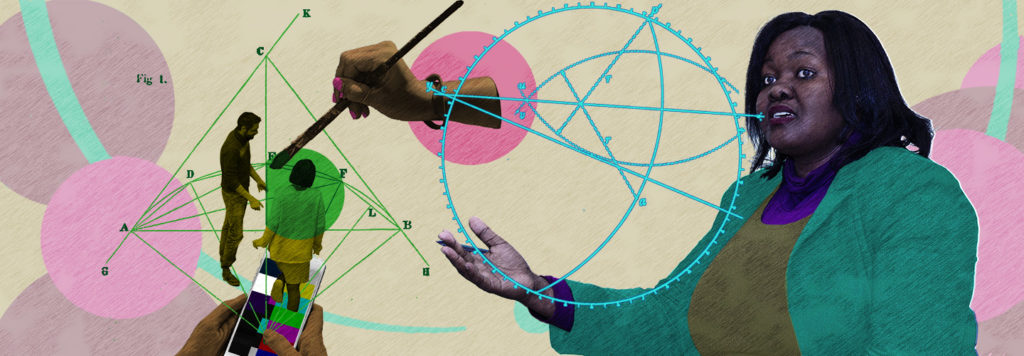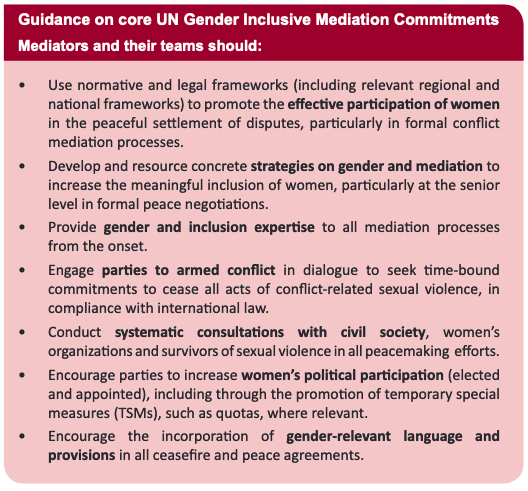
Mediators work within international normative frameworks that govern peace processes. These frameworks include UN resolutions, organizational rules and regulations, and both international and regional conventions and laws. Over the past 25 years, these frameworks have expanded considerably to both recognize and require the importance of women’s meaningful participation in peacemaking and to provide guidance on the gender-related aspects of peace processes.
This lesson summarizes and points to two of these resources. In the following page we will be able to engage with the important and often nuanced questions they raise about different approaches to targeting inclusion activities specifically on women.
1: UNSCR 1325
There are ten Security Council resolutions, as well as several General Assembly resolutions, that provide the foundational framework for the United Nations and its Member States regarding women, peace, and security. The cornerstone document continues to be Security Council Resolution 1325, adopted in 2010 after efforts by civil society, women’s movements, international organizations, and governments around the world. (Watch a short video on its development here)
The four pillars or core themes of the resolution are summarized as Prevention, Protection, Participation, and Relief/Recovery. The overall rationale can be captured in these statements:
- “Civilians, particularly women and children, account for the vast majority of those adversely affected by armed conflict”
- The “maintenance and promotion of international peace security” requires the “protection and full participation” of women and girls.
- There should be ”equal participation and full involvement” of women “in all efforts for the maintenance and promotion of peace and security”
2: Guidance on Gender and Inclusive Mediation Strategies
The UN’s Guidance on Gender and Inclusive Mediation Strategies provides a useful consolidation and translates the normative framework into commitments:
Mediators and their teams should:
- “Use normative and legal frameworks (…) to promote the effective participation of women in the peaceful settlement of disputes”
- “Develop and resource concrete strategies on gender and mediation to increase the meaningful inclusion of women”
- See the full list from page 12:

It is important to mention that these normative commitments are often difficult to translate into practice and that it’s important to look concretely at the context of a given process, in order to understand how this can be done.
The normative framework should also be understood as “the bottom”, but “not as the ceiling” for the mandate of mediation teams. That said, there are many ways in which the framework can be implemented and aligned with the specific needs and requirements of the process and context in which you operate.
